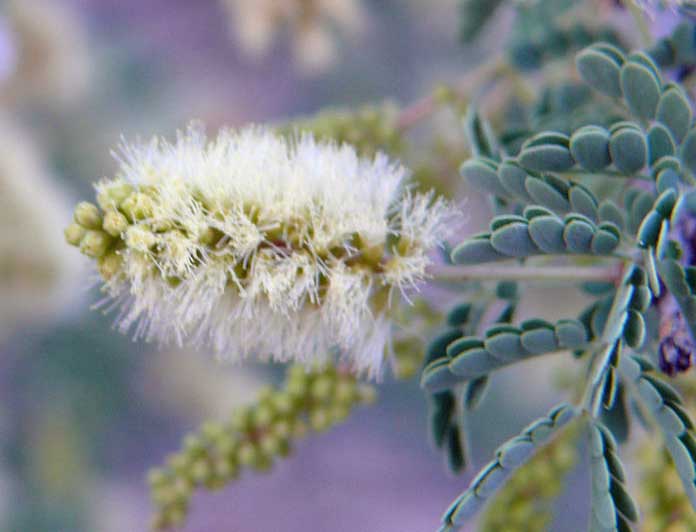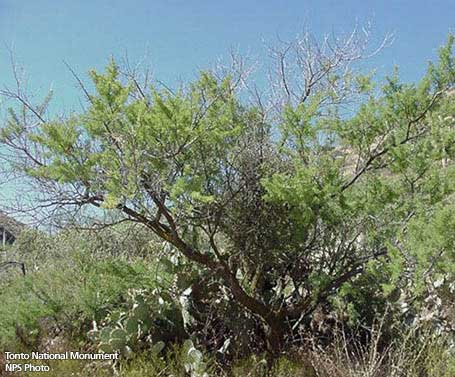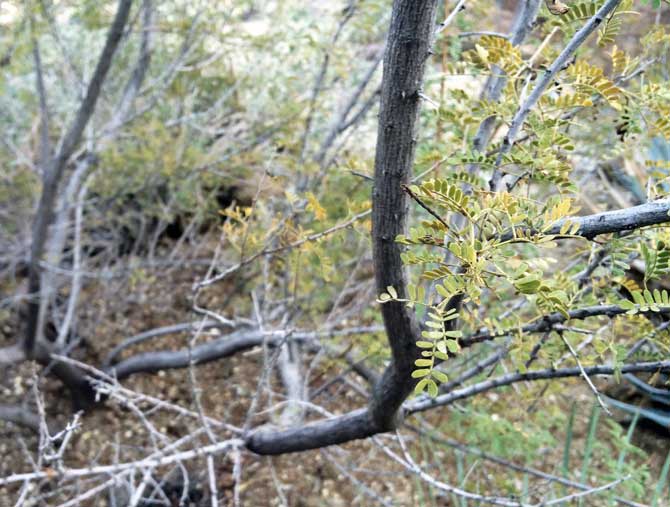Ethnobotany of southern California native plants:
Cat’s Claw (Acacia greggii)

Cat’s Claw (Acacia greggii) growing in Tuscon, Arizona.


Cat’s Claw (Acacia greggii)
Cat’s Claw is a small shrubby tree native to the southwestern US states. The tree is also referred to as catclaw mesquite, tear blanket, wait-a-minute-tree and catclaw acacia.
These odd names are all related to the many strong, sharp thorns covering this plant. The thorns feel similar to a cat’s claw. They can tear clothing and blankets. And when you get snagged by these thorns, you’ll need to ‘wait a minute’ while you remove the thorns from your clothes..
NOTE: The Fabaceae (bean family) plant discussed here is different from the other ‘Cat’s Claw’ (Uncaria tomentosa). Uncaria tomentosa is commonly used as a herbal supplement.
Cat’s Claw bean pods were eaten, but we’re not a preferred food source.
When necessary, the unripe beans of Acacia greggii were gathered and eaten by many desert tribes from the southwestern states. The Chemehuevi of the Southern Paiute, the Cahuilla and the Pima people all pulled beans from the pods on this tree and ate them. The beans were ground down into a flour, then mixed with water to make nutritious cakes. The Seri people also added sea lion oil into their Cats Claw cake batter, to make a sort of porridge.
It was important to avoid the mature beans as they contain a dangerous chemical, a cyanogenic glycoside, called prunasin. For this reason, the unripe beans were selectively picked.
The Kumeyaay from the San Diego region used Acacia greggii as a food source for domesticated animals.
The Cahuilla and the Pima used the fibers from this plant to create a rugged construction material. The Tohono O’odham and the Havasupai used sections of branches and twigs for brooms, baskets and sleeping cradles.
When collecting saguaro fruits, the long branches helped natives remove the fruits from the top of the cactus trunk.
References:
Watahomigie, Lucille J. 1982 Hualapai Ethnobotany. Peach Springs, AZ. Hualapai Bilingual Program, Peach Springs School District #8 (p. 14)
Please return to our main Ethnobotany of southern California page.
On our main ethnobotany page, we present a clickable list of the southern California native plants that became a part of the culture of Native Americans and early European settlers. These plants were used for medicine, food, shelter, drink, tools and art.
Warning: The information about plants on this website is intended for general educational purposes only. The author of this website accepts no responsibility for problems arising from the user’s misidentification, misuse, or use of plants. Please read the full TERMS associated with this website.
